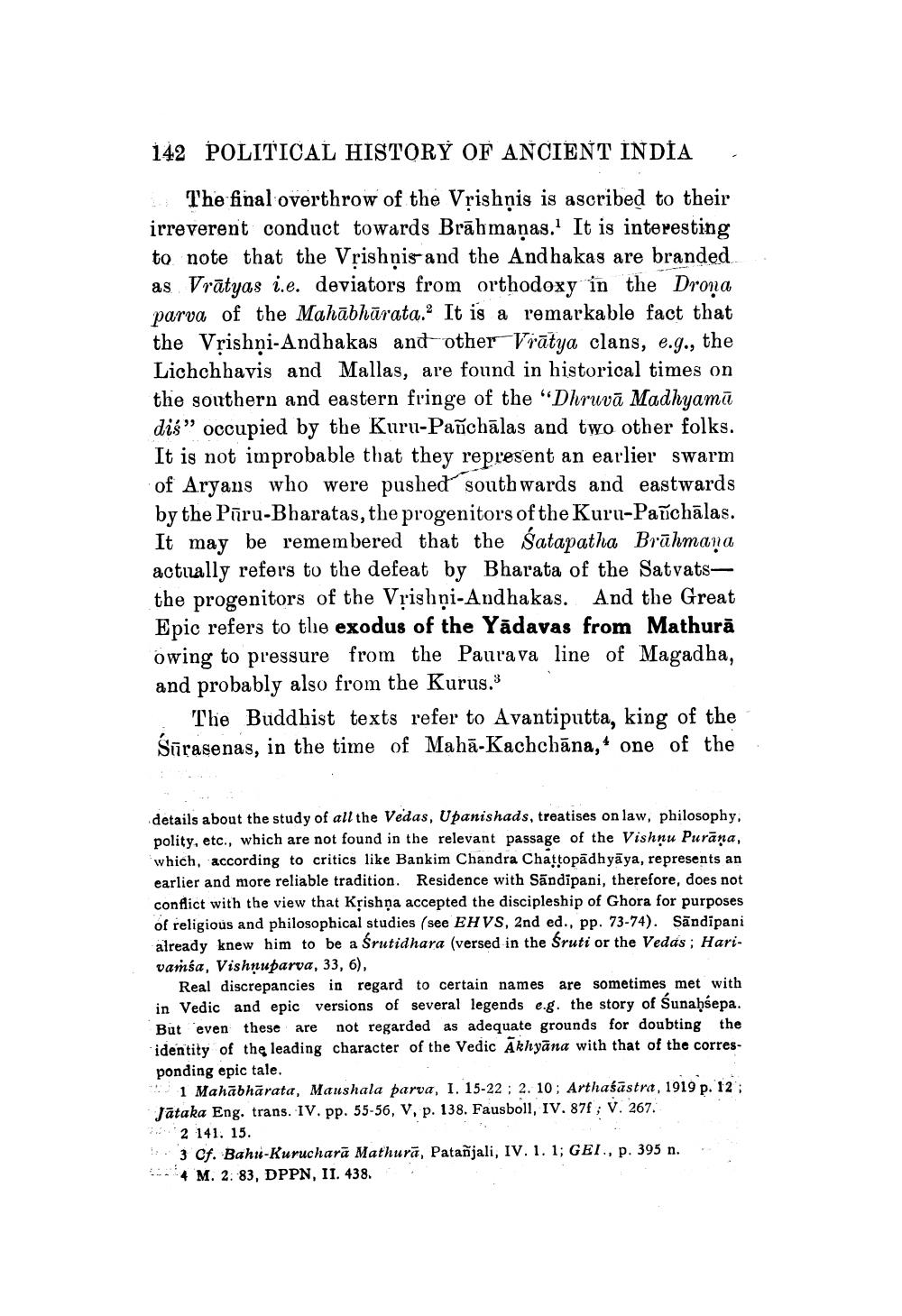________________
142 POLITICAL HISTORY OF ANCIENT INDİA
The final overthrow of the Vrishộis is ascribed to their irreverent conduct towards Brāhmaṇas. It is interesting to note that the Vrishộis and the Andhakas are branded as Vrātyas i.e. deviators from orthodoxy in the Droņa parva of the Mahābhārata. It is a remarkable fact that the Vrishņi-Andhakas and other Vrātya clans, e.g., the Lichchhavis and Mallas, are found in historical times on the southern and eastern fringe of the “Dhruvā Madhyamā dis” occupied by the Kuru-Pañchālas and two other folks. It is not improbable that they represent an earlier swarm of Aryans who were pusheď southwards and eastwards by the Pīru-Bharatas, the progenitors of the Kuru-Pañchālas. It may be remembered that the Satapatha Brāhmana actually refers to the defeat by Bharata of the Satvats— the progenitors of the Vrishại-Andhakas. And the Great Epic refers to the exodus of the Yādavas from Mathurā owing to pressure from the Paurava line of Magadha, and probably also from the Kurus.
The Buddhist texts refer to Avantiputta, king of the Śūrasenas, in the time of Mahā-Kachchāna,* one of the
details about the study of all the Vedas, Upanishads, treatises on law, philosophy, polity, etc., which are not found in the relevant passage of the Vishnu Purana, which, according to critics like Bankim Chandra Chattopadhyāya, represents an earlier and more reliable tradition. Residence with Sandipani, therefore, does not conflict with the view that Kțishņa accepted the discipleship of Ghora for purposes of religious and philosophical studies (see EHVS, 2nd ed., pp. 73-74). Sāndipani already knew him to be a Srutidhara (versed in the Sruti or the Vedas; Harivamsa, Vishnuparva, 33, 6),
Real discrepancies in regard to certain names are sometimes met with in Vedic and epic versions of several legends e.g. the story of Sunahsepa. But even these are not regarded as adequate grounds for doubting the identity of the leading character of the Vedic Akhyāna with that of the corresponding epic tale.
1 Mahābhārata, Maushala parva, I. 15-22; 2. 10; Arthaśāstra, 1919 p. 12; Jataba Eng. trans. IV. pp. 55-56, V, p. 138. Fausboll, IV. 87 ; V. 267.
2 141. 15. 1: 3 Cf. Bahu-Kurucharā Mathurā, Patañjali, IV. 1.1; GEI., p. 395 n.
4 M. 2: 83, DPPN, II. 438.




